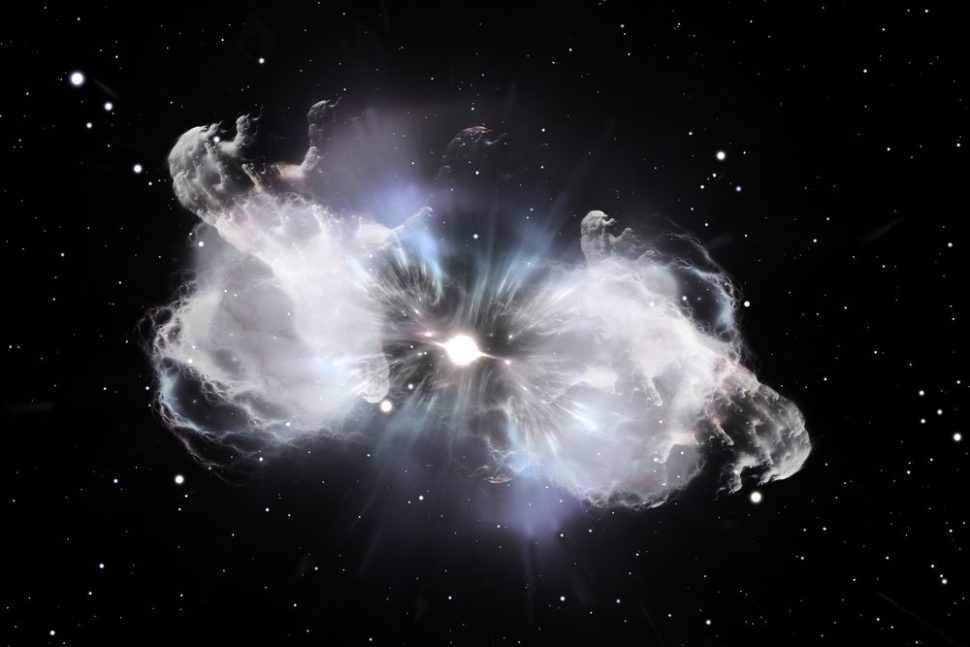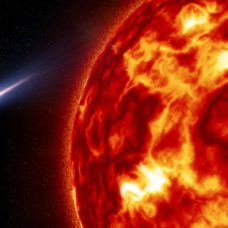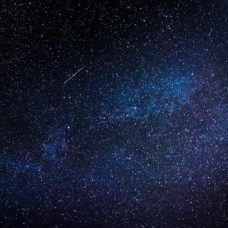Scientists believe that a far-off star has survived multiple supernovae events over the last two years. A bizarre phenomenon that calls into question what we know about the life-cycles of stars.
Don’t let the seemingly calm neighborhood of Earth fool you.
If one sees our planet as peacefully located in the suburbs of the Milky Way, the rest of the galaxy and the universe as a whole is a tumultuous and noisy place where violent events are occurring at every moment. Outside of our suburb sits an endless cosmic war zone of black holes, planetary collisions, and supernovae.
A star survived at least five supernovae events.Click To Tweet
One of the most awe-inspiring events in the universe is the death of a massive star, known scientifically as a supernova. Scientists previously believed that they understood much of the mechanisms behind a stars’ life and death until a recently discovered star defied and threw into question all of our collective knowledge of these celestial bodies.
A Star’s Life Ends With a Super Bang
Supernovae are supposed to be the last stage of a star’s life-cycle. The gigantic explosion of the star’s matter and energy, which can be observed across billions of light-years, takes a few months before it fades, little by little.
After that, all that remains from the star is a much smaller neutron star, or in the case of massive stars, a black hole.
Among the most impressive supernova events witnessed by astronomers was ASASSN-15lh, named after the All Sky Automated Survey for SuperNovae that detected the event in 2015.
Although its origin is debated, ASASSN-15lh was thought to be one of the most powerful “superluminous supernova” ever recorded, with its cosmic flash 20 times brighter than all the stars in the galaxy combined.
To place the size of these events into perspective, it is common for the light emitted by these events to be measured in relation to the brightness of our own sun, with the average brightness level being around 400 million times brighter.
However, an international team of astronomers has discovered a peculiar star that has been exploding over and over again for two years, and this one at its peak has measured as being 3.5 billion times brighter than our sun–that’s almost nine times brighter than any other supernova ever recorded.
The Star iPTF14hls has Survived Five Supernovae and Counting
The observation of these supernovae events could help astronomers to better understand the extreme celestial phenomena that still hold many mysteries.
Called iPTF14hls, and dubbed by some as the “zombie star”, this celestial body was discovered by astronomers using a network of telescopes at Las Cumbres Observatory.
Iair Arcavi, an astronomer at the University of California Santa Barbara and Las Cumbres Observatory, is one of the scientists working at the Palomar Transient Factory Intermediate (IPTF) in San Diego.
Back in September 2014, he detected a new supernova near the constellation Ursa Major. The supernova flash was fading, meaning the star was already dead, and Arcavi didn’t think much of it.
Then, when they looked again five months later, he and his team found that instead of fading out, the supernova was strangely getting brighter. This was intriguing enough for the team to keep monitoring the star around the clock.
Normally, supernovae shine faintly for a few months before darkening. Over 600 days, astronomers watched iPTF14hls brighten, then fade, then brighten again at least five times. In other words, iPTF14hls seems to have survived through five supernovae events, something that has never been seen before.
This again led to even further developments in the astronomer’s investigation. Further study by Arcavi’s colleagues led to the assumption that this same supernova could be one that had been observed twice before, in 1954 and again in 1993, by the same Palomar observatory.
Although some claim that these may have been separate supernovae that merely happened nearby, Arcavi explains that the likelihood of that happening was less than 5%.
“We’ve never really caught two supernovae happening in the same place before,” he told the Washington Times. “It would be really weird if the first time we see it is also the strangest supernova we’ve ever seen.”
How Science Could Explain This “Never-Ending” Supernova
According to Arcavi, this could be the first observation of a “pulsational pair-instability supernova” when the outer layers of a massive star, 100 times bigger than the sun, begin to explode.
“This process can repeat every few years or every few decades,” said Arcavi. “It’s an attractive theory because it explains why we may have seen this thing explode multiple times.” Then he adds, “Or it might not be that, in which case the theory needs to be something completely new.”
Waiting for the supernova to burst again, Arcavi and the team may find clues when they have a closer look at iPTF14hls next month using NASA’s Hubble Space Telescope. As it stands, there is no solid hypothesis as to what this event actually is, and claims of it being a “zombie star” must wait until all the facts have been presented.



















Comments (0)
Most Recent